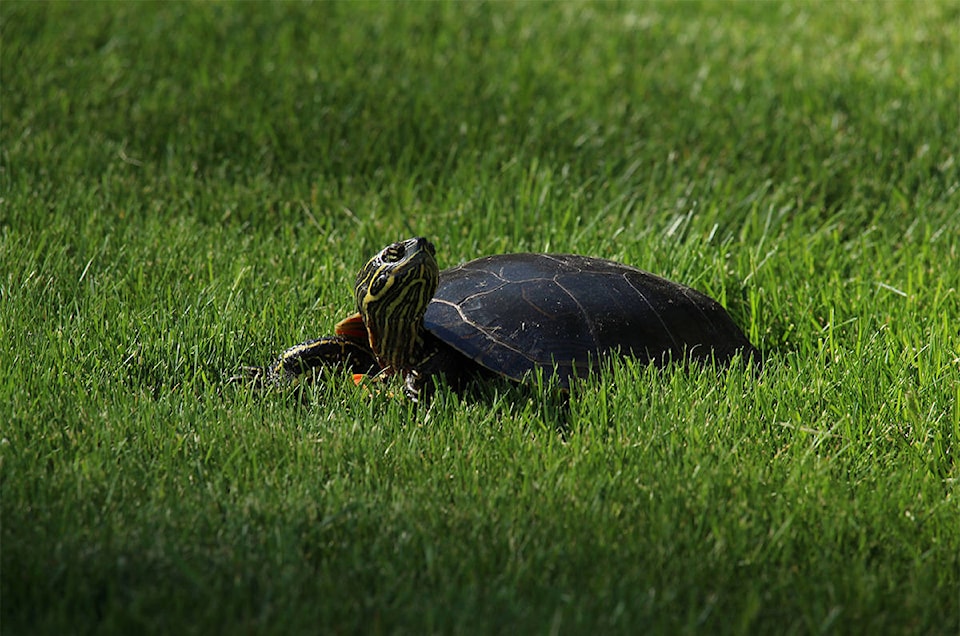As we emerge from our dens and hit the road with new adventures, the nature conservation agency is urging motorists to brake for turtles.
Spring and going into summer is an active period for turtles as they roam to find mates and nesting sites, said The Nature Conservancy of Canada (NCC). A common place to find turtles in Revelstoke is near the airport.
The Williamson Lake/Airport marsh is home to one of the most northern populations of the Western Painted Turtle.
The species is blue-listed, meaning it’s vulnerable. It’s the only freshwater native turtle to B.C. The NCC said turtles in the Revelstoke area are unique as they sexually mature later, eat more protein and live longer.
Turtles in our area do not sexually reproduce until beyond 10 years old and live for more than 50 years.
The NCC said studies show that just a five per cent increase in annual mortality can put an entire population at risk of decline. Several turtles have already been hit and killed this spring on the roads in Revelstoke.
READ MORE: Resident nudges Revelstoke to install new turtle crossing signs
Females cross Airport Road at Red Devil Hill from late May to early July to lay their eggs on the hill behind, which hatch the following year in September.
“Turtles are an important part of wetland ecosystems,” said Virginia Hudson, NCC manager of conservation planning and stewardship in B.C. “They play the role of the wetland janitor by helping keep wetlands clean and healthy by eating dead plants, insects and animals.”
She said the turtles in the Revelstoke are severely impacted by the flooding of the dam, as they need a steady supply of water levels. They also overwinter at the bottom of ponds that have to be deep enough to not freeze
“Western painted turtles do happen to be among the more charming wetland creatures,” said Hudson. “It’s always uplifting to see a bunch of them sunning themselves on logs or swimming in the shallows.”
Here are some tips from the NCC to help turtles survive in our area:
• To help a turtle safely cross the road, first make sure the road is safe for you to pull over and help. Put your safety first.
• Move the turtle in the direction it was going, otherwise it will likely try to cross again.
• For turtles that hide their heads in their shells (like western painted turtle), simply pick the turtle up, gently holding it with both hands, supporting its belly and holding the top of its shell (the way you might hold a hamburger), and carry it across the road. Carry it close to the ground – you don’t want to drop it.
• Once you are done moving the turtle, back away and let the turtle be to avoid causing it stress.
• Never push or shove turtles across the road with your feet or a stick. Their shells aren’t as thick underneath, and rough pavement can do a lot of damage.
Do you have something to add to this story, or something else we should report on? Email:
jocelyn.doll@revelstokereview.com
@RevelstokeRevue
editor@revelstoketimesreview.com
Like us on Facebook and follow us on Twitter.
